三島 喜美代/Mishima Kimiyo
三島喜美代(1932~2024)は、情報とゴミの問題を長年のテーマとして活動し、陶芸の新たな可能性を切り拓いた美術家です。
大阪市に生まれた三島は、1950年頃から伊藤継郎(1907~1994)のアトリエに通いはじめ、1954年から1969年にかけては独立美術協会に所属し、活動当初は主に具象画を制作していました。しかし、のちに夫となる画家の三島茂司(しげじ・1920~1985)との出会いが、三島に大きな転機をもたらします。具体美術協会の創設者・吉原治良(1905~1972)に師事し、半具象や抽象画を手がけ哲学にも造詣の深かった茂司との交流を通して、彼女が扱うテーマや表現方法は徐々に独自性を増していきました。1960年代は新聞や雑誌などの印刷物をコラージュした作品や、シルクスクリーンを用いた平面作品など、実験的な絵画の制作に取り組みました。1970年代に入ると、三島の関心は立体的な造形へと移行し、シルクスクリーンで新聞や広告ビラなどを陶土に転写した、「割れる印刷物」なる立体作品が生み出されます。氾濫する情報を、一見硬そうでいてその実もろい陶という素材によって表現し、情報化社会への不安を可視化したこの造形は、その斬新さと先見性で大きな注目を集めました。
大量の印刷物、すなわち大量の情報は、消費されるやいなやゴミとして処理されてしまいます。この点に目を向けた三島は、印刷物のみならず、空き缶やダンボールといった身近なゴミについても、陶による再現を試みます。情報化、産業化が推し進められていく現代社会において、その背後に横たわる課題を突きつけるとともに、情報やゴミを異化することで芸術における表現や素材を拡張した一連の作品は、欧米を中心に海外の日本現代陶芸展で広く紹介されました。
1986年から87年にかけては、ロックフェラー財団の奨学金を得てニューヨークに滞在しています。同地では、ポップアートの代表的な作家であるロイ・リキテンシュタイン(1923~1997)や、廃棄された日用品を題材にした彫刻家のルイーズ・ネヴェルソン(1899~1988)らと交流を深めました。帰国後は、岐阜県土岐市にアトリエを構え、地元の大阪と行き来しながら制作を続けました。80年代以降は、作品が次第に巨大化していきます。最大規模のインスタレーション作品であり三島の代表作でもある【20世紀の記憶】(1984~2013)では、大量の耐火レンガのブロックが床に敷きつめられており、各レンガの表面には、20世紀に発行された新聞から三島が選んだ記事が転写されています。
2001年からは、産業廃棄物を高温で焼成してできた、溶融スラグというガラス状の粉末素材や、自ら集めた鉄くずや廃材などを作品に取り入れるなど、その意欲的な挑戦は晩年まで続きました。三島は2024年6月、自身の回顧展が開催されているさなかでこの世を去りましたが、近年、国内外での評価がさらに高まりつつあることからも窺えるように、彼女の作品が持つ力は決して朽ちることはないでしょう。
Kimiyo Mishima (1932-2024) was an artist who explored the issues of information and waste throughout her career, pioneering new possibilities in ceramics.
Born in Osaka, Mishima began attending the studio of Tsuguro Ito (1907-1994) around 1950. From 1954 to 1969, she was a member of the Independent Art Association, initially producing primarily figurative paintings. However, her encounter with painter Shigeji Mishima (1920-1985), who later became her husband, marked a turning point in her work. Under the influence of Shigeji Mishima, who had studied under Jiro Yoshihara (1905-1972), the founder of the Gutai Art Association, and a painter of semi-figurative and abstract works with a deep interest in philosophy, Kimiyo’s themes and methods gradually became more distinctive. In the 1960s, she worked on experimental paintings, such as collages of printed materials like newspapers and magazines, as well as two-dimensional works using silk screens. By the 1970s, her focus shifted toward three-dimensional forms, leading to the creation of “cracked prints”, ceramic works with images of newspapers and advertisements transferred onto clay using silkscreen techniques.
These pieces, which expressed the fragility of the overwhelming flow of information in society by using ceramics, a material that appears solid but is actually quite fragile, gained significant attention for their originality and foresight. Mass-produced printed materials, or vast amounts of information, are consumed and immediately discarded as waste. Acknowledging this, Mishima expanded her work beyond printed matter, incorporating everyday waste items like empty cans and cardboard boxes, recreating them in ceramics. Her series of works, which challenged the underlying issues associated with modern society’s industrialization and information overload while also reimagining waste as art, broadened the scope of artistic expression and materials. These works were widely exhibited in Japanese contemporary ceramic art exhibitions, particularly in Europe and the U.S.
From 1986 to 1987, she received a Rockefeller Foundation grant and stayed in New York, where she deepened her connections with prominent artists, such as Roy Lichtenstein (1923-1997), a leading figure in Pop Art, and Louise Nevelson (1899-1988), a sculptor known for using discarded everyday items in her works. After returning to Japan, she established a studio in Toki, Gifu Prefecture, and continued to work, traveling between there and her hometown of Osaka. From the 1980s onward, her works grew increasingly large. Her major installation, “Memory of the 20th Century” (1984-2013), features a floor covered with firebrick blocks, each surface imprinted with articles Mishima selected from 20th-century newspapers.
From 2001, she continued her bold experimentation, incorporating materials such as molten slag – a glassy powder formed from industrial waste melted at high temperatures – along with scrap iron and other waste materials she collected herself, and this ambitious challenge persisted until her later years. Though Mishima passed away in June 2024, during the run of a retrospective exhibition of her work, the growing recognition of her work, both in Japan and abroad, is a testament to the enduring power of her art, which will never fade.
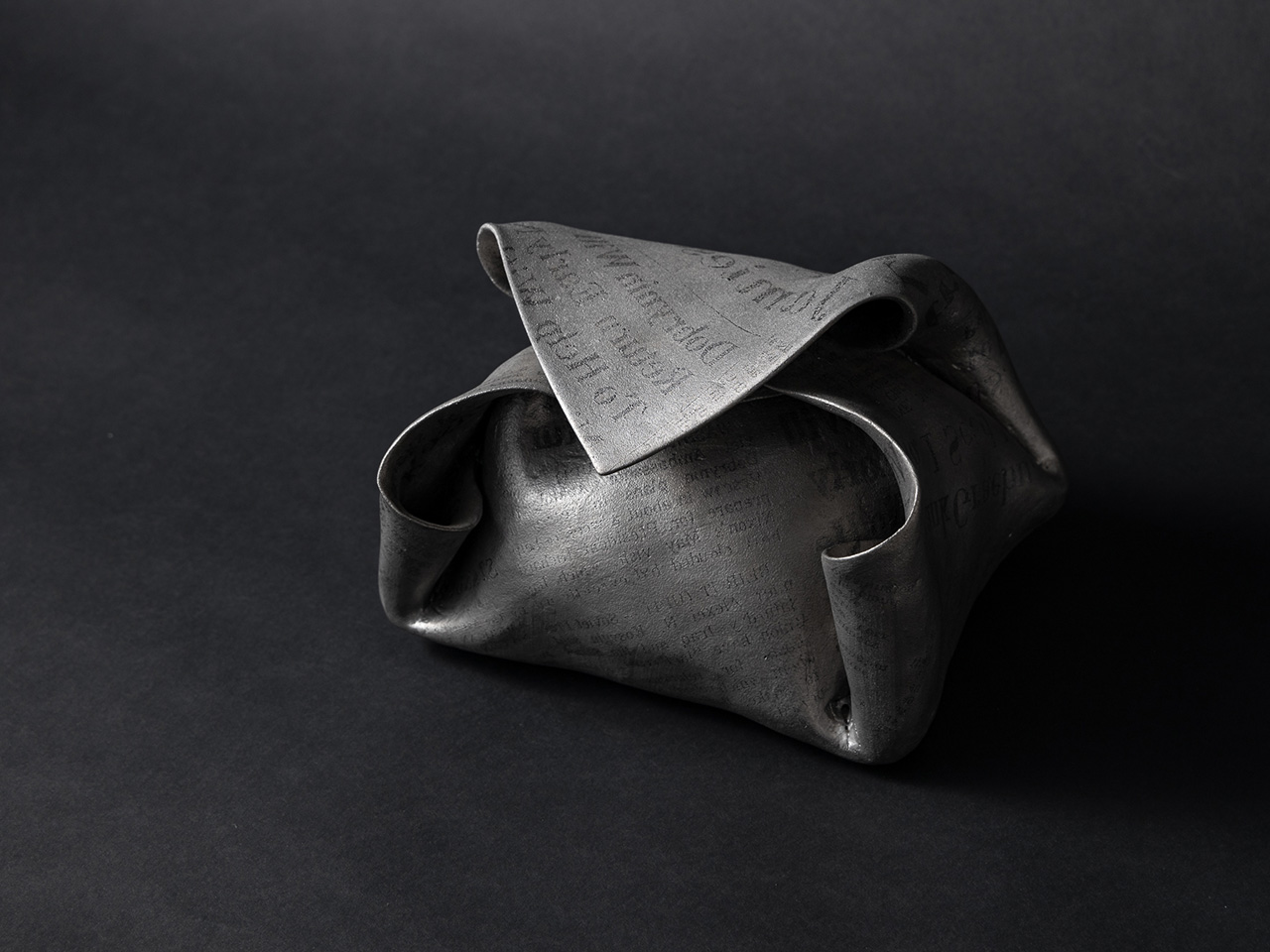
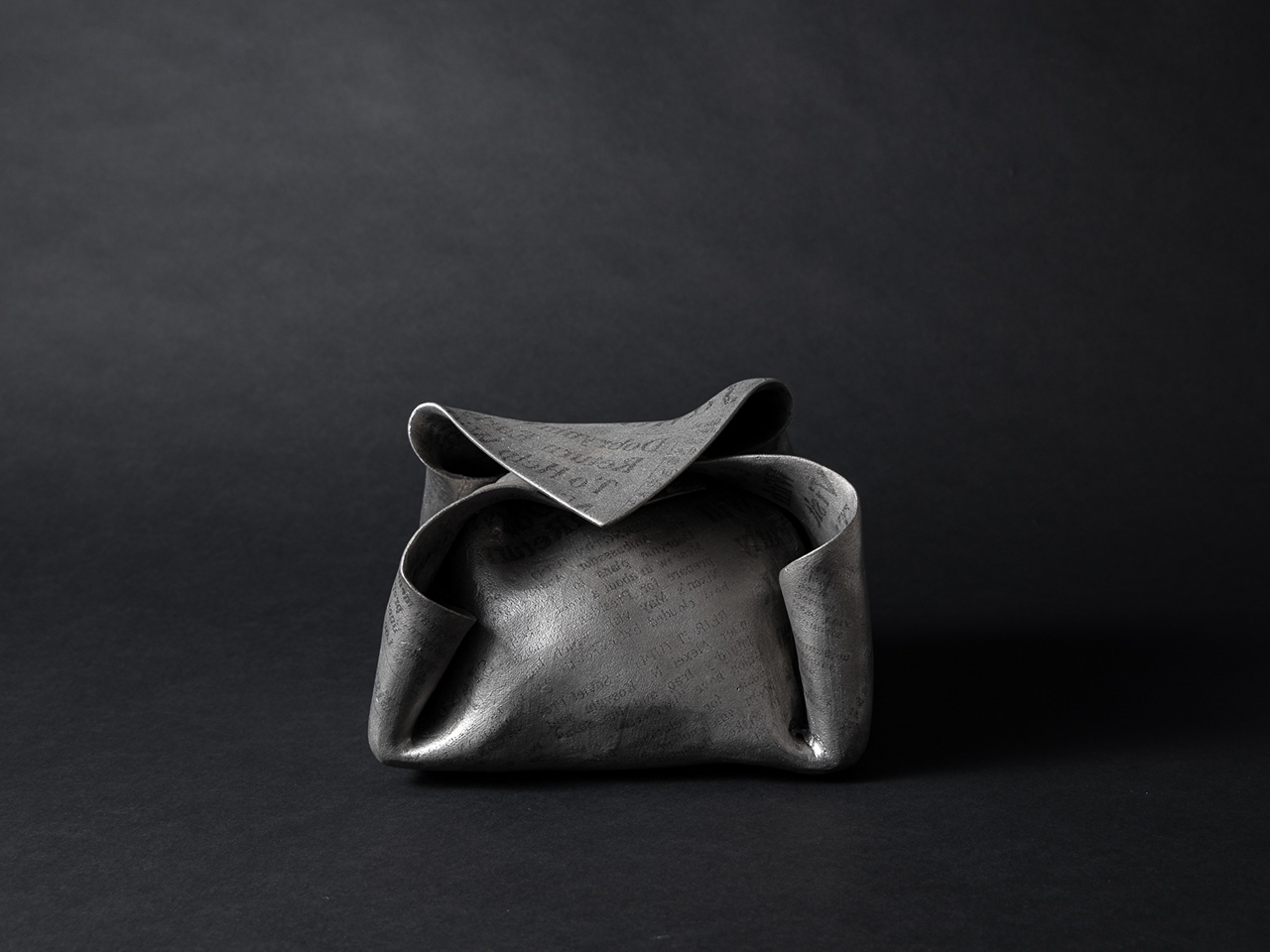
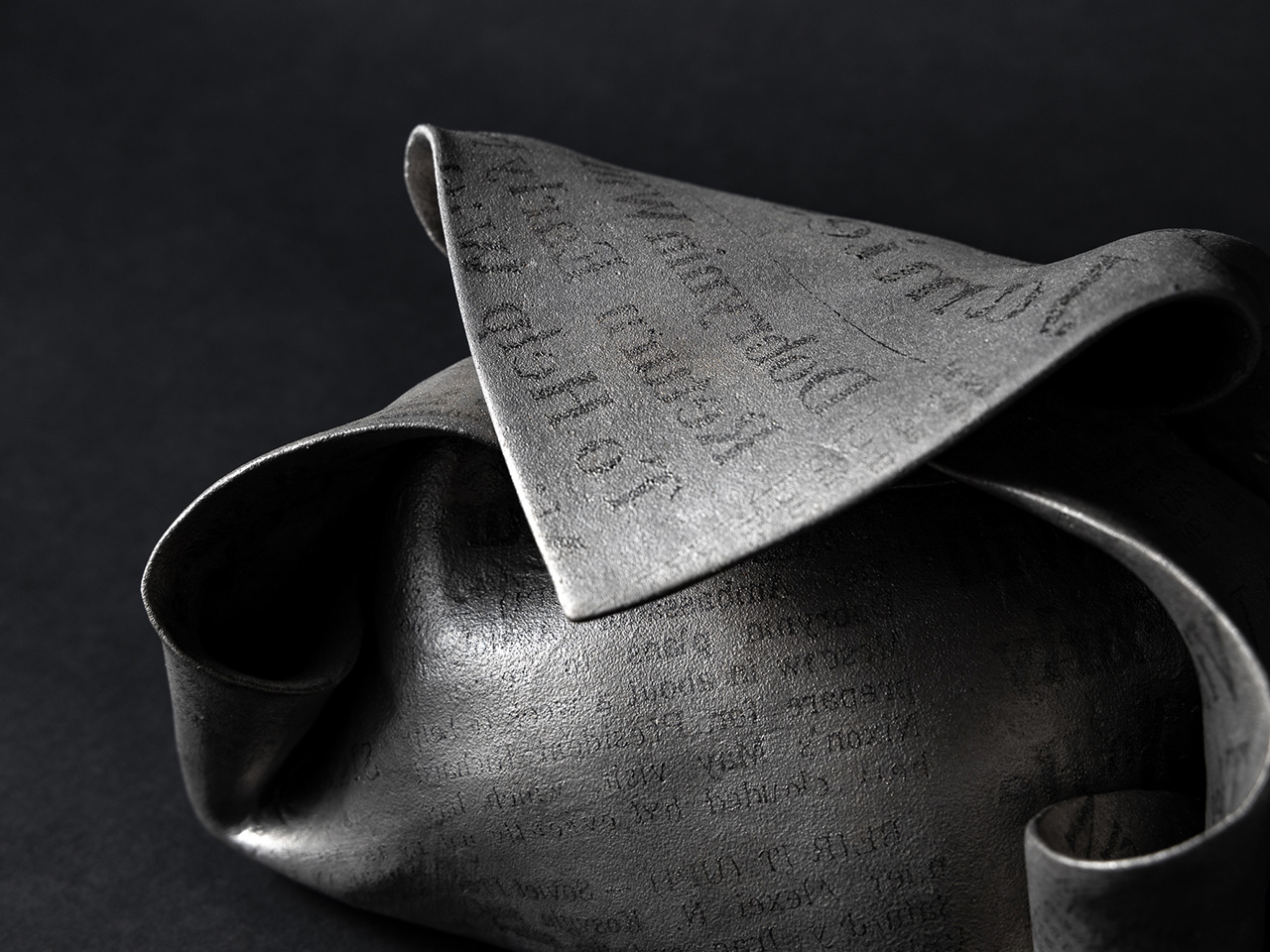
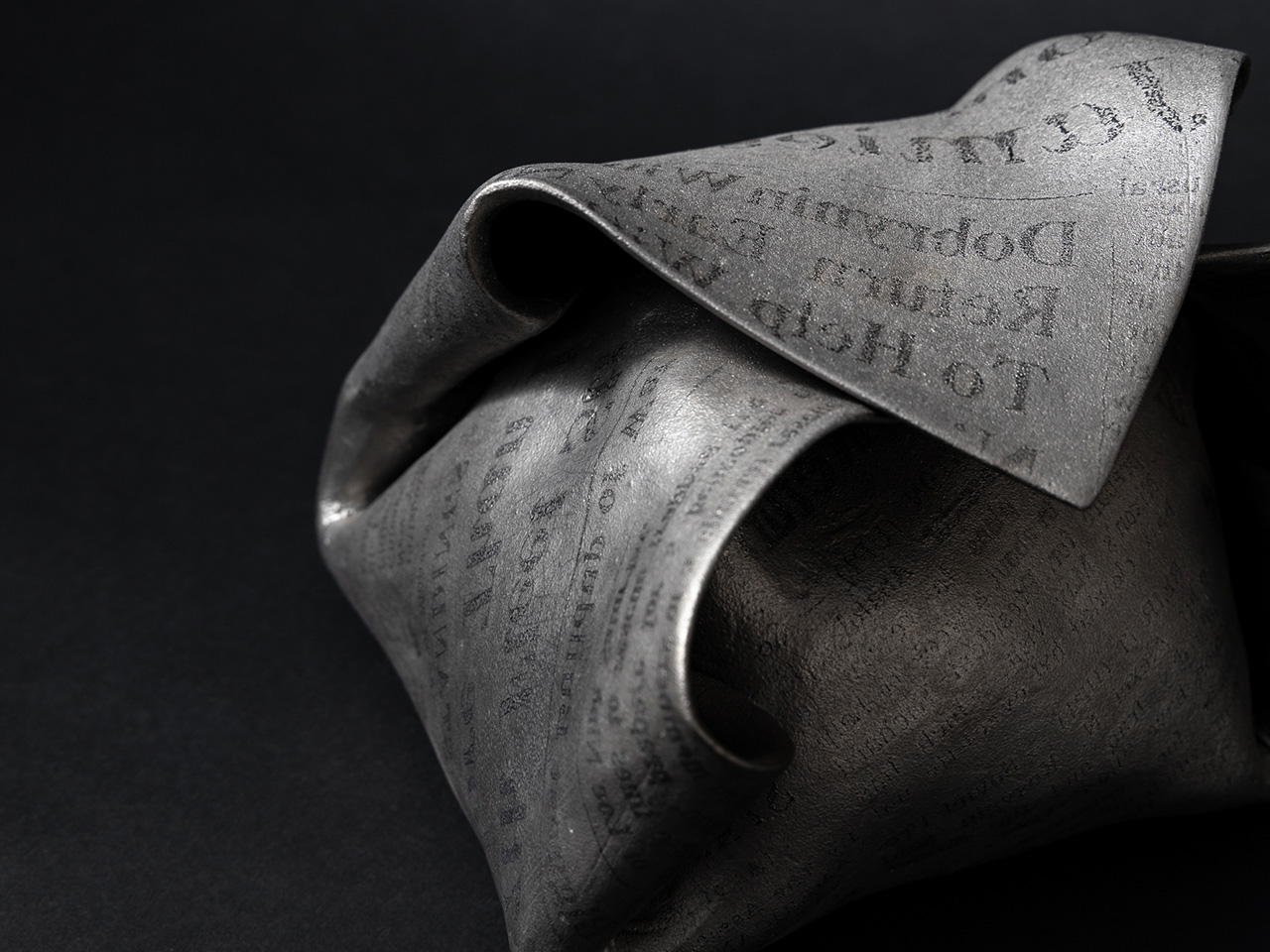

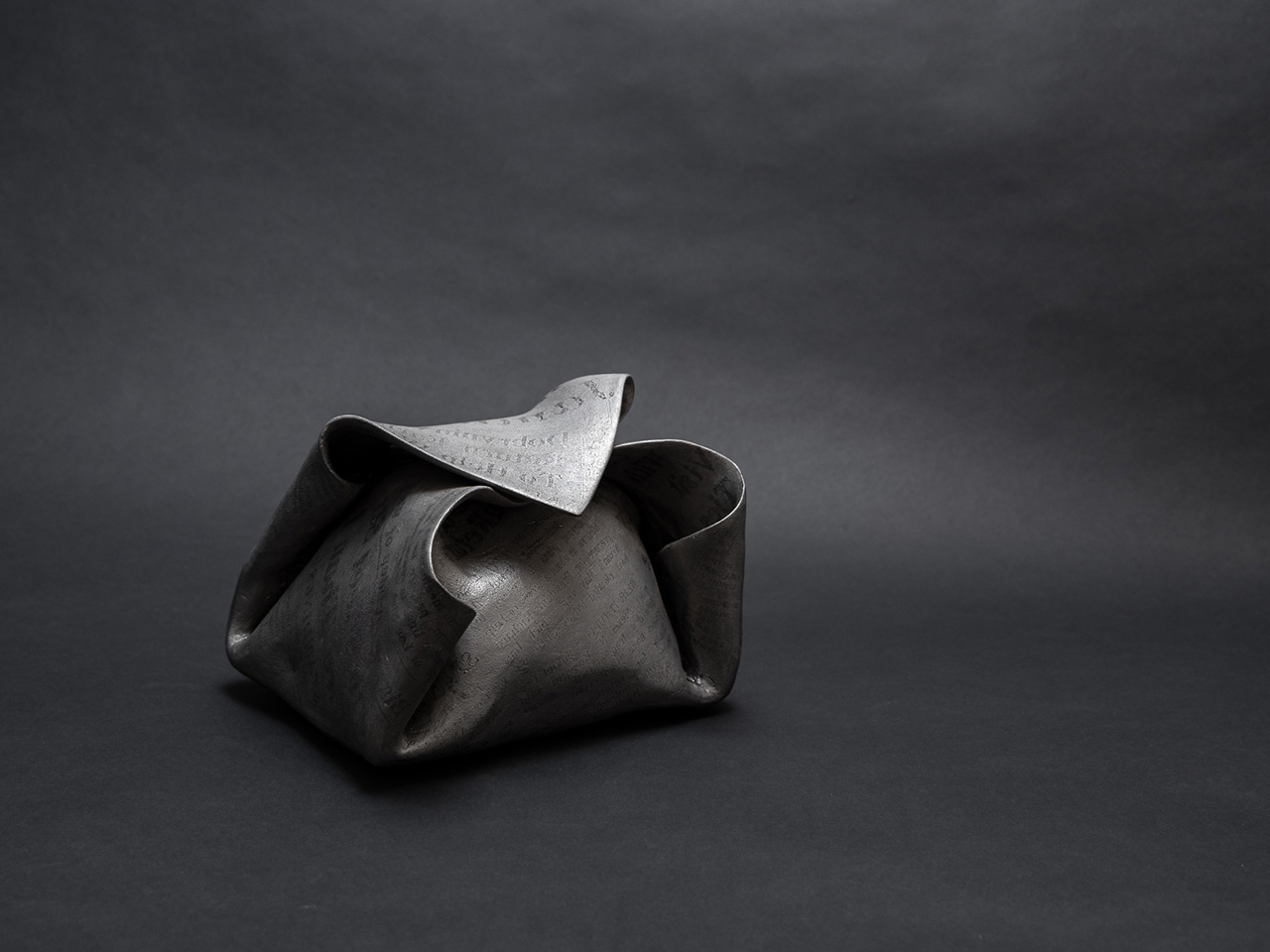
作品名:作品 P-Ⅱ
サイズ:H16×W21×D18.5cm(セラミック 共箱)
価格:ASK
価格は税抜き表示です

